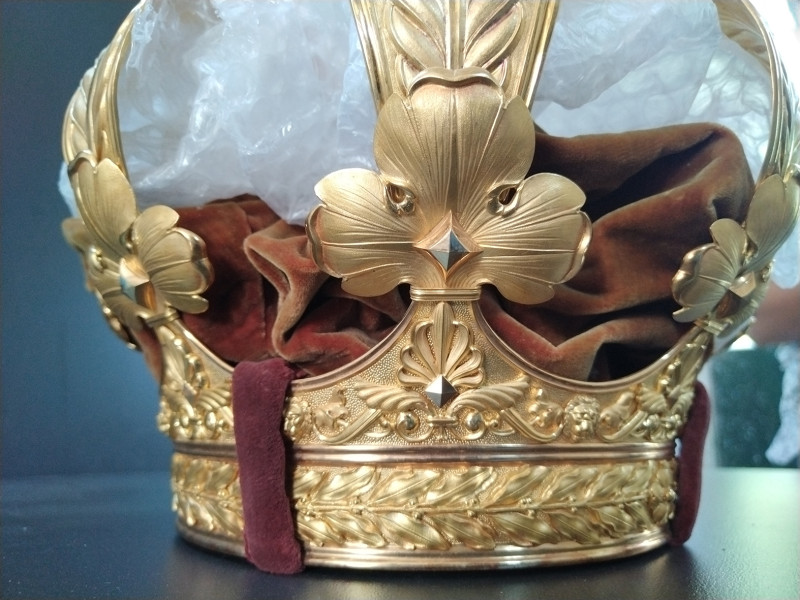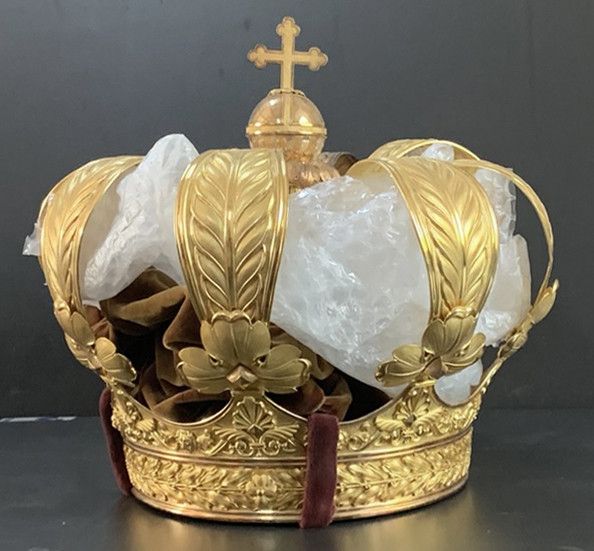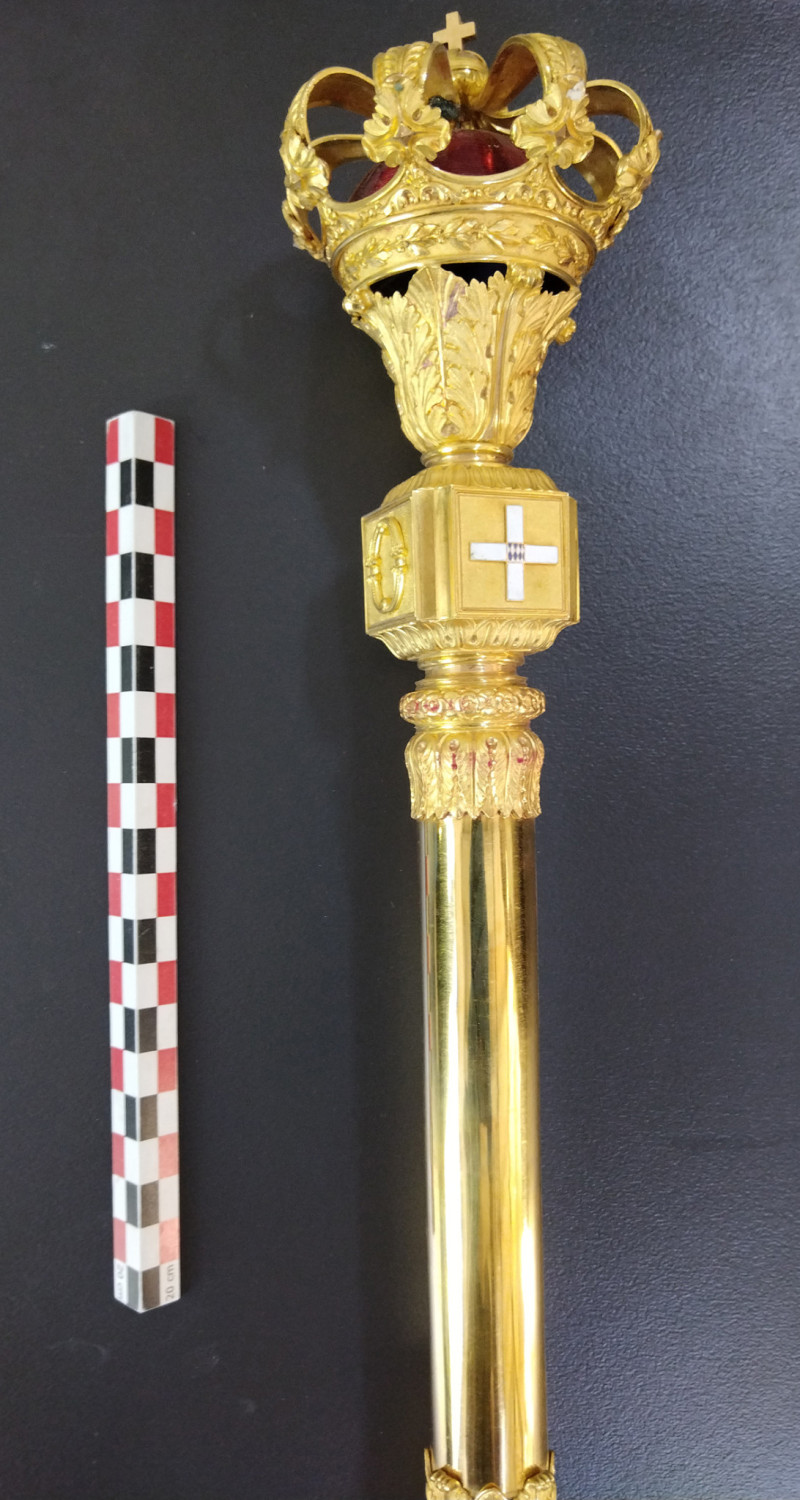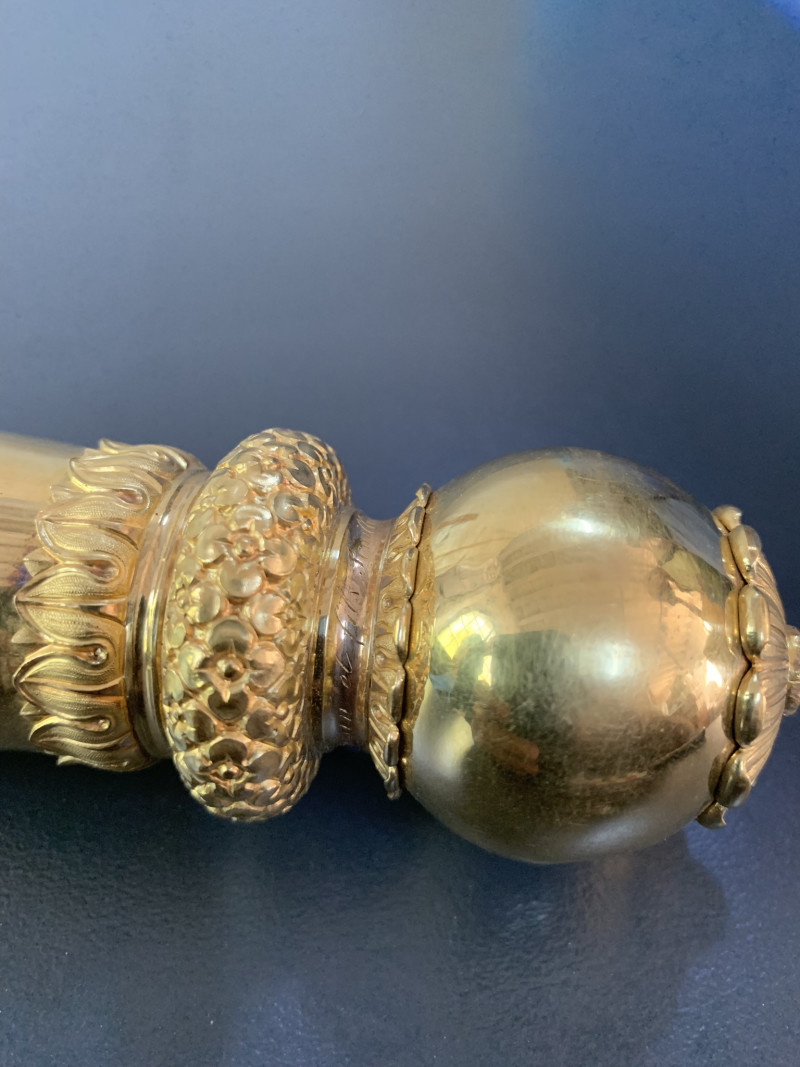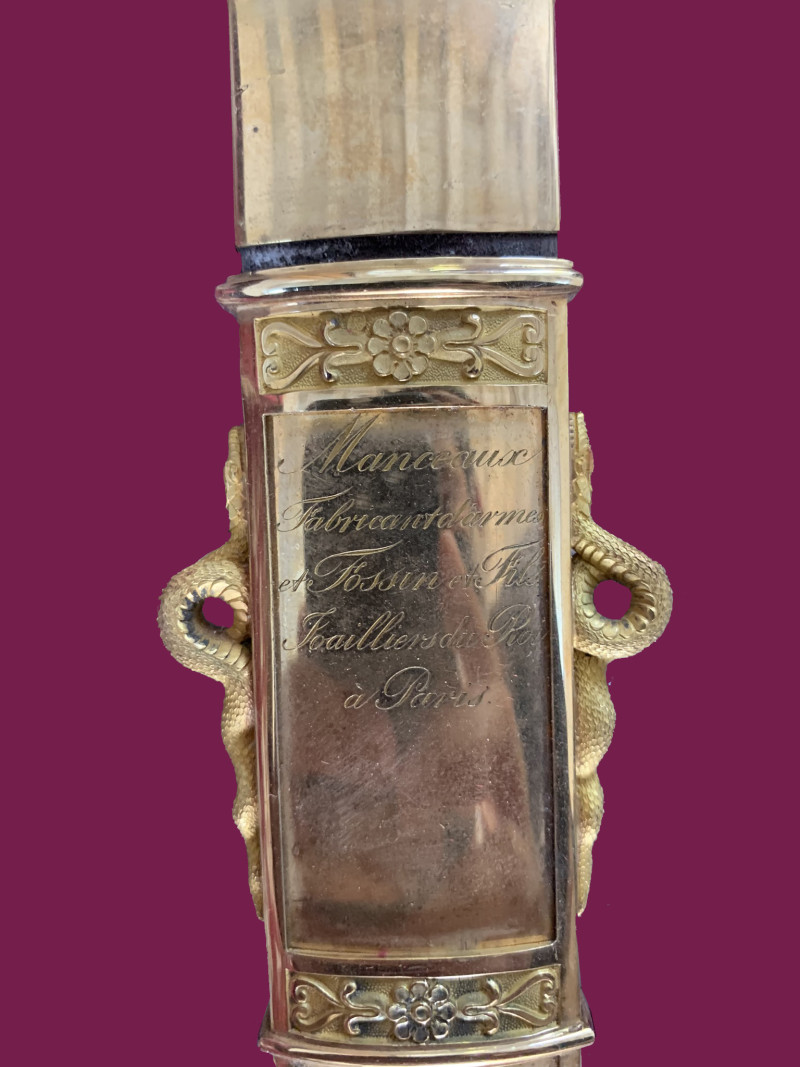The crown, scepter and sword of the first king of the Greek state were found in very good condition
The royal emblems of King Otho of Greece, the crown, scepter and sword, have been located in Tatoiduring the work of documenting cultural goods and movable objects by officials of the competent services of the Ministry of Culture.
Othonprince of Bavaria, of the house of Wittelsbach, reigned in Greece under the title King of Greece, from 1832 to 1862.
Othon leaving Greece in 1862 he took with him the emblems of the throne, as he never accepted his eviction nor abdicated the throne. So, the first emblems of the Greek state were since 1862 in the possession of the royal house of Bavaria.
Gold, plain, and bearing no precious stones
The emblems of the first king of the Greek state found, in very good conditionwell preserved and carefully packed.
Their construction was commissioned by Louis of Bavaria, Otto’s father, in 1835, to be given to the young king at his coronation, which would take place, the same year, when he came of age.
However, the ship that carried them did not arrive in Greece in time and the coronation took place without them.
The crown and the scepter were made by the famous Parisian goldsmith house Fossin et Fils, while for the sword Fossin collaborated with the swordsmith Jules (?) Manceaux, of the homonymous house of gunsmiths.
The objects, made of gold and metal alloys, are characterized by the high artistry of their makers.
They are rather plain, bearing no precious stones (other than the lapis lazuli on the hilt of the sword), but the symbolism of their decorative elements is important. They are the starting point for the tradition shaping the state symbols that would follow for the next two centuriesdespite the change in dynasty and polity.
Crown
Material: Gold and gilded metal, enamel, velvet. Dimensions: Height 25 cm., Max. Diameter 29 cm.
Inscription: Fossin et fils Joailliers du Roi à Paris.
The crown, it had been used at the funeral of King Paulin March 1964, and at the funeral of the late Queen Frederica, in February 1981.
The crown bears a wreath decorated with a floral band reminiscent of a laurel wreath.
At this point there is an epithet with the signature of the artist. From there, eight arches start, decorated with ancient acanthus leaves and lion heads, from which grow respectively eight arched stems in the shape of palm branches. The whole composition is united in the center where the epitaph of the crown is formed with the globe, below the cross. Inside, the purple velvet is preserved, but shows extensive wear.
Scepter
Material: Gold and gilded metal, enamel
Dimensions: Height 78 cm., Max. Thickness 7.4 cm.
Inscription: Fossin et fils Joailliers du Roi à Paris.
Scepter consisting of three oblong stems joined by decorated knobs. In visitation it bears a crown with an enamel decoration on the inside. In the upper cubical connection knob alternating decoration, with the monogram of Otho and enamel with a white cross.
In union of the antennae the colors of the Bavarian flag can be seen. This is followed by a stem, without decoration, and a button with corresponding decoration, where instead of the monogram of Otho, full-length facing lions are depicted. The central stem is entirely decorated with acanthus floral decoration. The lower stem ends in a sphere with floral decoration. The manufacturer’s inscription is engraved at this point.
Sword
Material: Gold and gilded metal, enamel, lapis lazuli
Dimensions: Height 92 cm., Width 12.7 cm.
Inscription: Manceaux Fabricant d’armes et Fossin et Fils Joailliers du Roi à Paris.
The sword has an elaborately decorated hilt and scabbard, where plant and animal motifs predominate. The handle is formed from a lazulite stone and ends in a knob, where two female figures are depicted in relief. THE decoration it continues in the cross formed by the horizontal stems of the thimble. The case bears the monogram of Otto in relief on the upper edge, followed by the coat of arms of Greece, in enamel.
On the back side there is a partition with the manufacturer’s inscription. The holes for hanging the sword are formed by winding snakes. The whole composition is surrounded by a thin belt with lion heads. Near the base of the case is a representation of a female figure, probably Victory, surrounded by a medal in the shape of a palm tree, while in the background war trophies can be seen. In the lower decorative band of both sides, adjectival decoration with dolphins winding around tridents.
Their story
The last time the three emblems were presented together was in December 1959, at the ceremony of handing them over from the House of Wittelsbach to the then King of the Greeks Paul.
After diplomatic negotiations, the head of the House of Wittelsbach, Albert, offered the emblems of the throne again to Greece. The ceremony of their delivery took place in the Palace of Athens (now the Presidential Palace), in December 1959, in the presence of Prime Minister Konstantinos Karamanlis and members of the cabinet.
The date was chosen to coincide with the anniversary of Otto’s arrival in Athens, in 1834, and the proclamation of the city as the capital of the new Greek kingdom. Albert’s son Maximilianos-Emmanuel presented the royal couple with the first emblems of the Greek throne, on a symbolic day for the state and its capital.
The Minister of Culture Lina Mendoni upon being informed of the find, he stated the following: “I want to thank the competent services of the Ministry of Culture for the extremely diligent, systematic scientific work they have been doing in Tatoi in recent years. The discovery of the royal emblems of Otho, king of Greece, it was unexpected. Their importance is extraordinary for the Greek State, regardless of the state change that has taken place. They are the first official insignia of the new Greek State and offer tangible traces of its continuity over time. It is obvious that the royal emblems belong to the Greek People and the Nation. As soon as their maintenance is completed, the objects, after relevant consultation with the Prime Minister and the Speaker of the Parliament, will be handed over to the Hellenic Parliament -Othon’s Palace- in order to be permanently displayed in the “Eleftherios Venizelos” Trophies Hall.
Source: Skai
I have worked as a journalist for over 10 years, and my work has been featured on many different news websites. I am also an author, and my work has been published in several books. I specialize in opinion writing, and I often write about current events and controversial topics. I am a very well-rounded writer, and I have a lot of experience in different areas of journalism. I am a very hard worker, and I am always willing to put in the extra effort to get the job done.


